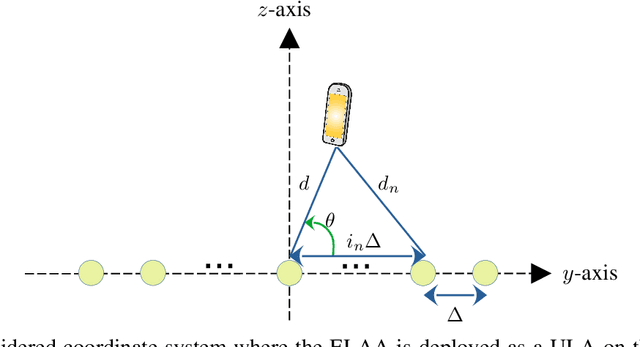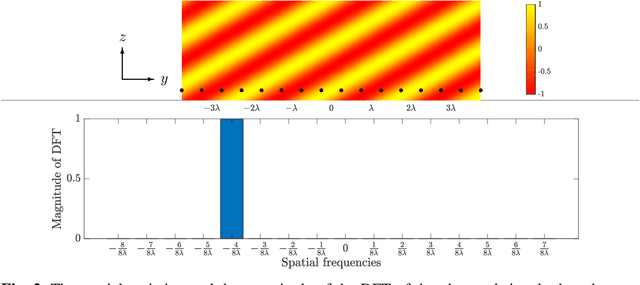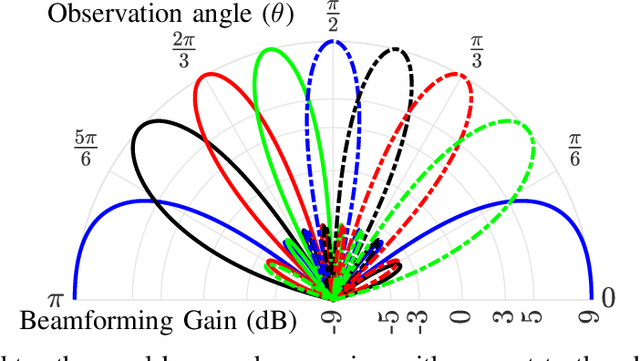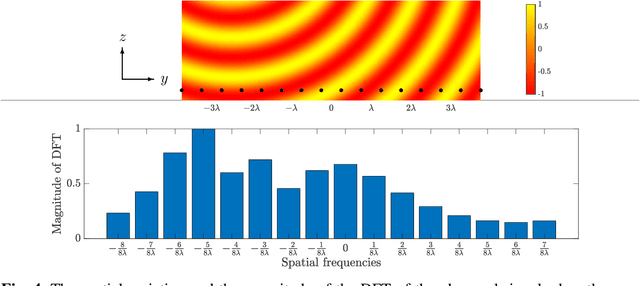The Roles of Spatial Frequencies and Degrees-of-Freedom in Near-Field Communications
Paper and Code
Jul 10, 2024



As wireless technology begins to utilize physically larger arrays and/or higher frequencies, the transmitter and receiver will reside in each other's radiative near field. This fact gives rise to unusual propagation phenomena such as spherical wavefronts and beamfocusing, creating the impression that new spatial dimensions -- called degrees-of-freedom (DoF) -- can be exploited in the near field. However, this is a fallacy because the theoretically maximum DoF are already achievable in the far field. This paper sheds light on these issues by providing a tutorial on spatial frequencies, which are the fundamental components of wireless channels, and by explaining their role in characterizing the DoF in the near and far fields. In particular, we demonstrate how a single propagation path utilizes one spatial frequency in the far field and an interval of spatial frequencies in the near field. We explain how the array geometry determines the number of distinguishable spatial frequency bins and, thereby, the spatial DoF. We also describe how to model near-field multipath channels and their spatial correlation matrices. Finally, we discuss the research challenges and future directions in this field.
 Add to Chrome
Add to Chrome Add to Firefox
Add to Firefox Add to Edge
Add to Edge